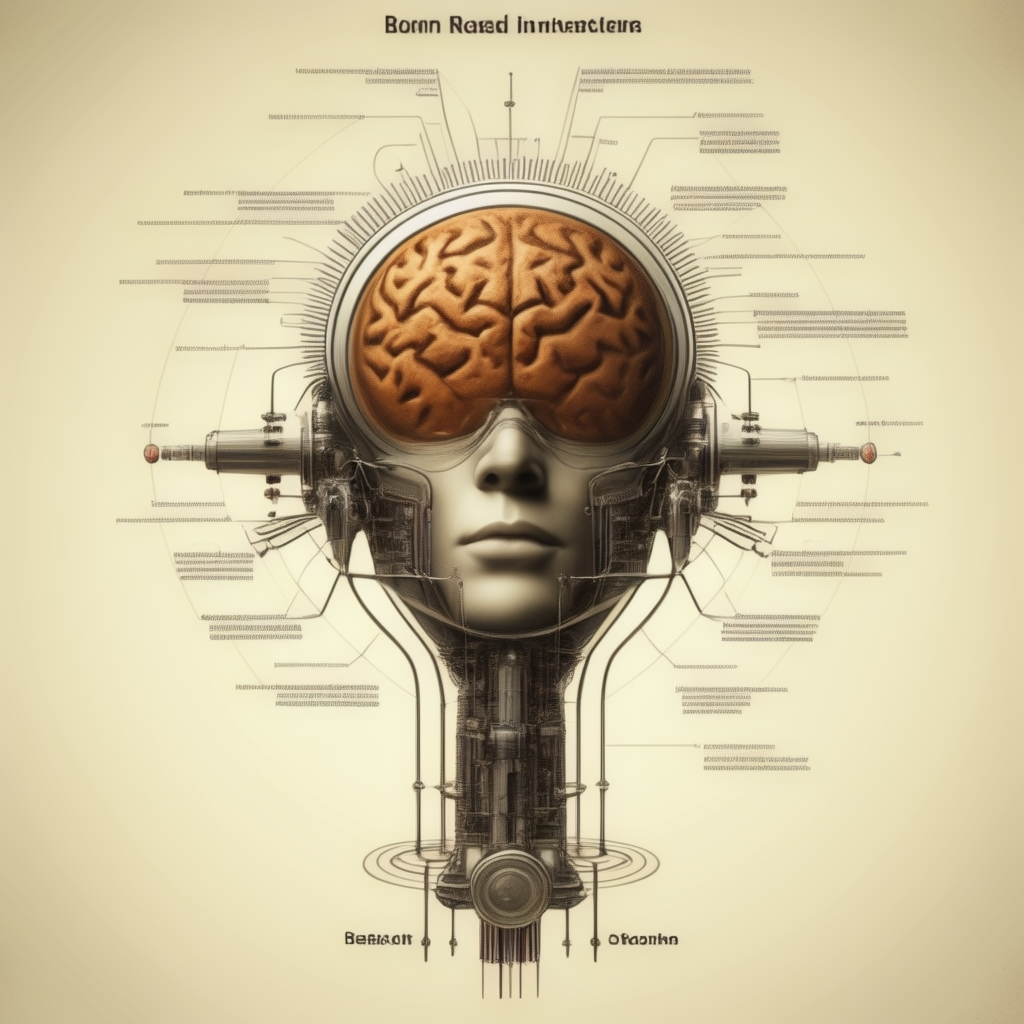Introduction:
In the vast landscape of Artificial Intelligence (AI), the concept of representation plays a pivotal role in shaping the intelligence of an agent. Representations are the building blocks that enable an AI system to comprehend, reason, and interact with the world. In this blog post, we delve into the intricacies of different types of representations agents can use, with a focus on understanding the distinctions between atomic representations, factored representations, and structured representations.
- Atomic Representations: The Elementary Units
At the most fundamental level, atomic representations capture singular, indivisible units of information. Think of these representations as the basic building blocks of an AI system. In atomic representations, each piece of data is treated as an independent entity, devoid of any relationships with other data points. This simplicity can be advantageous in scenarios where a straightforward, isolated understanding of individual elements suffices. However, it may fall short in capturing complex relationships and dependencies within a system.
At the foundational level, atomic representations serve as the elemental particles of an AI system’s cognitive architecture. Each datum is treated as an isolated, indivisible unit. This granularity provides simplicity, making atomic representations well-suited for tasks requiring straightforward, independent analysis. For instance, in image recognition, pixels might be considered atomic units, each contributing independently to the overall understanding of the image.
However, the simplicity of atomic representations comes with limitations, especially in scenarios where the relationships and dependencies between data points play a crucial role.
- Factored Representations: Unraveling Complexity
Factored representations step up the complexity by introducing relationships and dependencies among different elements. Unlike atomic representations, factored representations acknowledge that data points are not isolated entities but are interconnected. In this approach, information is structured into factors, and the relationships between these factors are explicitly defined. This facilitates a more nuanced understanding of the data, allowing the AI agent to grasp intricate patterns and dependencies within the information it processes.
Factored representations bridge the gap between simplicity and complexity by acknowledging the interconnected nature of data. In this paradigm, data points are not treated in isolation but rather as part of a web of relationships and dependencies. These relationships are explicitly defined as factors, enabling the AI agent to recognize patterns and dependencies within the information it processes.
Consider a recommendation system where user preferences are factored into various elements such as historical data, current behavior, and social connections. The explicit acknowledgment of these interconnections allows the AI system to offer more nuanced and personalized recommendations.
- Structured Representations: Building a Holistic Worldview
Structured representations take the idea of interconnectedness to the next level. Here, information is organized in a structured format, often resembling the natural organization of data in the real world. This format allows the AI agent to not only understand individual elements and their relationships but also to perceive the overall structure and context in which these elements exist. Structured representations are particularly powerful in scenarios where a holistic understanding of complex systems is crucial, enabling the agent to navigate and comprehend intricate real-world scenarios.
Structured representations elevate the concept of interconnectedness to a higher plane by organizing information in a structured format. This format mirrors the natural organization of data in the real world, incorporating hierarchies and relationships that go beyond the immediate connections found in factored representations.
In structured representations, the focus extends beyond individual data points and their explicit relationships to encompass the broader context in which these elements exist. This holistic approach enables the AI agent to not only understand the intricate relationships between data points but also to perceive the overall structure and context in which these relationships unfold.
Consider a language understanding task where words are not only related to each other but are also part of phrases, sentences, and paragraphs. Structured representations enable the  system to capture both the micro-level relationships between words and the macro-level structure of the entire text.
system to capture both the micro-level relationships between words and the macro-level structure of the entire text.
Key Differences: Atomic vs. Factored vs. Structured Representations
- Granularity of Information:
- Atomic: Singular, isolated data points.
- Factored: Interconnected data points with explicit relationships.
- Structured: Hierarchical organization of data, capturing both relationships and context.
- Complexity of Relationships:
- Atomic: No explicit relationships; each data point is independent.
- Factored: Explicitly defined relationships between interconnected data points.
- Structured: Hierarchical relationships that capture both local and global dependencies.
- Applicability:
- Atomic: Suitable for simple, isolated tasks.
- Factored: Ideal for tasks requiring an understanding of relationships between elements.
- Structured: Well-suited for tasks demanding a comprehensive understanding of complex systems.
- Flexibility in Learning:
- Atomic: Limited flexibility due to isolated nature.
- Factored: Enhanced adaptability through explicit relationship recognition.
- Structured: Maximum adaptability with a holistic understanding of complex relationships.
- Data Representation Formats:
- Atomic: Often numerical or categorical values.
- Factored: Graphs or matrices representing explicit relationships.
- Structured: Hierarchical formats, such as trees or graphs, representing complex relationships and contexts.
- Learning and Generalization:
- Atomic: Limited generalization due to the isolation of data points; learning is often task-specific.
- Factored: Improved generalization as the agent can leverage explicit relationships to infer patterns and behaviors across interconnected elements.
- Structured: Enhanced learning capabilities with the ability to generalize across complex structures and contexts, facilitating adaptability to diverse scenarios.
7. Memory Efficiency:
- Atomic: Typically more memory-efficient, as each data point requires minimal storage.
- Factored: May require additional memory to store explicit relationships, impacting efficiency.
- Structured: Memory-intensive, especially in scenarios with extensive hierarchical structures, potentially affecting scalability
8. Dynamic Adaptability:
- Atomic: Limited adaptability in dynamic environments as changes may require substantial relearning.
- Factored: Moderate adaptability due to explicit relationships, allowing the agent to adjust to changing contexts to some extent.
- Structured: High adaptability, with the ability to dynamically incorporate new information into existing structures, providing a more fluid response to changes.
10. Representation Learning:
- Atomic: Limited representation learning capabilities; each element is treated independently.
- Factored: Allows for representation learning as relationships provide additional context for understanding data.
- Structured: Well-suited for representation learning, capturing intricate features and hierarchies that contribute to a more nuanced understanding of the underlying data.
11. Domain-specific Considerations:
- Atomic: Commonly used in tasks like basic image processing, where individual pixels or features are analyzed.
- Factored: Effective in domains such as recommendation systems, where explicit relationships between user preferences significantly impact outcomes.
- Structured: Valuable in natural language processing, biology, and other domains where complex relationships and contextual understanding are paramount.
12. Explainability and Interpretability:
- Atomic: Generally more straightforward to interpret, as each element’s contribution is independent.
- Factored: Interpretability may be more challenging due to the complexity introduced by explicit relationships.
- Structured: Interpretability can be both challenging and insightful, as the hierarchical structure may provide a holistic view but could make individual relationships harder to disentangle.
13. Integration of Uncertainty:
- Atomic: Typically lacks a mechanism to handle uncertainty, making it less robust in ambiguous scenarios.
- Factored: Can incorporate uncertainty by considering the variability in relationships, offering a more robust approach in uncertain environments.
- Structured: Robust handling of uncertainty, especially in hierarchical structures, providing a nuanced understanding of ambiguous situations.
14. Human-Interpretability:
- Atomic: Generally more interpretable to humans due to the simplicity of isolated elements.
- Factored: Interpretability may vary; explicit relationships can enhance or complicate human understanding depending on the complexity of the factors.
- Structured: May require advanced visualization techniques, but can provide a more intuitive representation of complex information for human interpreters.
15. Transfer Learning:
- Atomic: Limited transferability as learning is often task-specific.
- Factored: Moderate transfer learning capabilities, leveraging learned relationships for related tasks.
- Structured: High transferability, especially when the hierarchical structure aligns with shared features across tasks.
16. Ethical Considerations:
- Atomic: Potential biases may arise as each element is treated independently, ignoring systemic relationships.
- Factored: Bias mitigation is possible by explicitly considering and addressing relationships, but biases may still emerge from the chosen factors.
- Structured: Offers opportunities for ethical considerations by capturing nuanced relationships and contextual dependencies, but also requires careful curation to avoid reinforcing biases.
17. Resource Requirements for Training:
- Atomic: Typically requires less training data and computational resources due to the simplicity of individual elements.
- Factored: Moderate resource requirements; explicit relationships may necessitate larger datasets and computational power.
- Structured: Higher resource demands for training, especially in scenarios with extensive hierarchies, potentially requiring substantial computing resources.
18. Robustness to Noisy Data:
- Atomic: Susceptible to noise, as each element’s interpretation is independent.
- Factored: Improved robustness as relationships can help filter out noise to some extent.
- Structured: Enhanced resilience to noisy data, particularly when hierarchical structures allow for the filtering of noise at different levels.
19. Real-time Processing:
- Atomic: Well-suited for real-time processing due to lower computational demands.
- Factored: Moderate real-time processing capabilities, depending on the complexity of relationships.
- Structured: Real-time processing may be challenging in complex scenarios, especially with large hierarchical structures.
20. Handling Multimodal Data:
- Atomic: Limited capacity to seamlessly integrate information from multiple modalities due to its singular focus on individual elements.
- Factored: Moderate capability to handle multimodal data by incorporating explicit relationships between factors representing different modalities.
- Structured: Well-suited for integrating information from diverse modalities, providing a holistic view of complex, multimodal datasets.
21. Temporal Dynamics:
- Atomic: Challenges in capturing temporal dependencies as each element is treated independently.
- Factored: Improved temporal modeling by explicitly defining relationships that evolve over time.
- Structured: Well-equipped to handle temporal dynamics, especially in hierarchical structures where time-dependent relationships can be represented at different levels.
22. Adversarial Robustness:
- Atomic: Vulnerable to adversarial attacks, as manipulations of individual elements can have a direct impact.
- Factored: Improved resilience to certain types of adversarial attacks due to the consideration of explicit relationships.
- Structured: Offers potential advantages in adversarial robustness, especially when the hierarchical structure introduces complexity for adversaries.
23. Online Learning:
- Atomic: Generally well-suited for online learning scenarios due to its simplicity and lower computational demands.
- Factored: Moderate adaptability to online learning, with considerations for updating explicit relationships dynamically.
- Structured: Challenges in real-time online learning, particularly in scenarios with extensive hierarchical structures, which may require careful management of updates.
24. Data Privacy:
- Atomic: Potential privacy advantages as each element is treated independently, limiting the exposure of sensitive information.
- Factored: Privacy considerations depend on the nature of the explicit relationships; care is needed to avoid revealing sensitive patterns.
- Structured: May introduce privacy challenges, especially if the hierarchical structure reveals sensitive dependencies or connections between data points.
25. Scalability:
- Atomic: Generally scalable due to its simplicity, making it suitable for large datasets.
- Factored: Moderate scalability; the explicit definition of relationships may impact scalability in certain applications.
- Structured: May pose challenges in terms of scalability, especially when dealing with extensive hierarchical structures, requiring efficient algorithms and computational resources.
26. Cognitive Neuroscience Inspiration:
- Atomic: Aligns with a reductionist approach, akin to understanding neural activity at the level of individual neurons.
- Factored: Reflects a more holistic perspective, drawing inspiration from neural network architectures that emphasize interconnected processing units.
- Structured: Resonates with the hierarchical organization observed in the brain, allowing for the representation of complex relationships and hierarchical dependencies.
27. Explanatory Power:
- Atomic: Limited ability to provide detailed explanations for predictions, as it lacks the contextual understanding of relationships.
- Factored: Improved explanatory power due to the explicit representation of relationships, allowing for more detailed insights into decision-making.
- Structured: Enhanced explanatory capabilities, providing a rich context for predictions through hierarchical relationships and dependencies.
28. Task-specific Feature Engineering:
- Atomic: Often requires task-specific feature engineering to extract relevant information from individual elements.
- Factored: Reduced dependence on task-specific feature engineering, as explicit relationships capture relevant information.
- Structured: Inherent task-specific features may emerge from the hierarchical structure, minimizing the need for extensive feature engineering.
29. Inherent Biases:
- Atomic: Prone to reinforcing biases present in individual elements, as it treats each piece of data in isolation.
- Factored: Offers opportunities to mitigate biases by carefully curating factors and addressing potential biases in relationships.
- Structured: The hierarchical nature may introduce or mitigate biases, depending on the complexity of the relationships and the representation of contextual dependencies.
30. Graph Theory Application:
- Atomic: Less directly aligned with graph theory concepts, as it operates on singular, independent data points.
- Factored: Can be conceptualized as a graph, with factors representing nodes and relationships as edges, allowing for the application of graph theory concepts.
- Structured: Inherently aligned with graph theory, with hierarchical structures resembling directed acyclic graphs or trees, providing a rich foundation for graph-based analyses.
31. Meta-learning Capabilities:
- Atomic: Limited meta-learning capabilities, as it lacks the inherent capacity to generalize across different learning tasks.
- Factored: Moderate meta-learning potential, leveraging learned relationships to adapt to new, related tasks.
- Structured: High meta-learning capabilities, especially when the hierarchical structure allows for the transfer of knowledge across diverse tasks
32. Interpolation vs. Extrapolation:
- Atomic: Generally more suited for interpolation tasks, where predictions fall within the range of training data.
- Factored: Balanced capabilities for both interpolation and extrapolation, with explicit relationships aiding in generalization beyond training data.
- Structured: Well-suited for extrapolation, especially when hierarchical relationships capture patterns that extend beyond the immediate training context.
33. Representation Compression:
- Atomic: Inherently compressed representations, with each element contributing to a compact representation of the overall system.
- Factored: May introduce a level of compression, as relationships allow for the representation of complex patterns in a condensed form.
- Structured: Hierarchical structures can compress information effectively, capturing intricate dependencies in a concise format.
34. Robustness to Feature Noise:
- Atomic: Prone to the impact of feature noise, as each element’s interpretation is isolated.
- Factored: Improved resilience to feature noise, as explicit relationships may help filter out irrelevant information.
- Structured: Can handle feature noise well, especially when hierarchical structures allow for robust filtering at different levels of abstraction.
35. Dimensionality Reduction:
- Atomic: Inherently reduces dimensionality by representing each element individually.
- Factored: Offers a moderate level of dimensionality reduction, particularly when factors capture shared information.
- Structured: Effective dimensionality reduction, especially in scenarios where hierarchical structures allow for the grouping of related features.
36. Incorporation of Latent Variables:
- Atomic: Limited capacity to model latent variables, as each element is considered in isolation.
- Factored: Can implicitly capture some latent variables through relationships between factors.
- Structured: Well-suited for modeling latent variables, especially in hierarchical structures where different levels may represent varying degrees of abstraction.
37. Parallelization in Training:
- Atomic: Highly parallelizable, as each element can be processed independently.
- Factored: Partial parallelization, with dependencies limiting complete parallel processing.
- Structured: Limited parallelization, especially in deep hierarchical structures where information flow is sequential.
38. Natural Language Processing Applications:
- Atomic: Applied in basic tasks like word recognition, where individual elements (letters or characters) are analyzed.
- Factored: Beneficial in tasks like sentiment analysis, where relationships between words and their context impact the overall sentiment.
- Structured: Essential for complex tasks like syntactic and semantic parsing, where hierarchical structures mirror the grammatical and contextual relationships within a sentence.
39. Representation Visualization Challenges:
- Atomic: Straightforward to visualize, as each element can be represented independently.
- Factored: Visualization may require techniques that illustrate relationships, potentially becoming complex with numerous interconnected factors.
- Structured: Visualization can be challenging, especially in deep hierarchical structures, where representing both local and global relationships in a comprehensible manner is non-trivial
40. Data Fusion in Multisource Environments:
- Atomic: Limited capability to fuse information from multiple sources effectively.
- Factored: Improved data fusion, leveraging explicit relationships to integrate information from diverse sources.
- Structured: Well-suited for data fusion, especially when hierarchical structures enable the integration of information across different levels.
Conclusion:
Diving even deeper into the intricacies of representation, considerations extend to robustness against feature noise, dimensionality reduction, and challenges in visualizing complex structures. The choice between atomic, factored, or structured representations becomes an art, requiring a delicate balance between task-specific requirements, computational efficiency, and the interpretability of the resulting AI system. A meticulous exploration of these nuanced details empowers practitioners to tailor representations that not only solve specific challenges but also push the boundaries of what AI can achieve across diverse applications.







